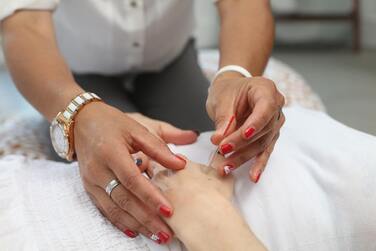 Photo by Antonika Chanel on Unsplash Photo by Antonika Chanel on Unsplash Neck pain ranges from being a slight nuisance to debilitating. There are a few different ways you can ease neck pain, especially with the help of acupuncture. Below you’ll find more information about what this holistic medical treatment is and how it can help heal your neck pain. What Causes Neck Pain? Neck pain can be the result of numerous things. This includes muscle strain, sleeping in an incorrect position, or even leaning over your phone or computer for too long. Sometimes neck pain can also be a sign of an underlying problem, like arthritis, a herniated disc, or whiplash. While rare, neck pain could also be an indicator of a hidden infection.  Photo by Andrea Piacquadio from Pexels Photo by Andrea Piacquadio from Pexels Common Side Effects of Neck Pain This pain not only can cause excruciating sensations around your neck, but can affect many other areas of your body as well. Some of the most common side effects of neck pain are:
What is Acupuncture? Acupuncture is a type of alternative medicine that applies needles in trigger points throughout your body to help relieve pain. By pushing the needles into these areas, it’s believed to help stimulate them so that blood circulation increases. This can calm tingling nerves and decrease pain caused by them. Is Acupuncture Painful? Is it Safe? While it might seem like poking needles into your skin might hurt, acupuncture rarely causes discomfort. In fact, most people who undergo this treatment barely notice when the needles are inserted. At most, you’ll more than likely feel a dull sensation where the acupuncture is performed. Acupuncture is safe to do. The disposable needles are sterilized before being used on your body. The main side effects of it are slight bruising and swelling near the area where treatment was done. While generally safe for most people to use there are a few conditions that might not react positively to it, such as if you suffer from bleeding disorders. 3 Ways Acupuncture Helps Relieve Neck Pain It Calms the Central Nervous System The central nervous system connects the brain to the spinal cord. It’s composed of numerous tissues that control various bodily functions. If you damage your neck, it will affect how well the central nervous system works and could lead to serious health concerns, like multiple sclerosis and neuralgia. By using acupuncture to release tension and pain in your neck, it will calm the central nervous system. It Releases Stiffness A stiff neck is usually caused by overexertion or extreme tension. This can make it difficult for you to turn your head. Acupuncture can release tension in your neck and slightly improve neck functioning. An acupuncturist will feel around your neck to identify areas of tension and pain. A few might massage the area before they apply the needles as a way to warm the spot up. It Invigorates Your Blood Circulation If you have poor blood flow in your neck, it could result in neck pain. The techniques used for this medical procedure increase nitric oxide in the areas where the needles are placed. This encourages the development of oxygen which can boost blood circulation. 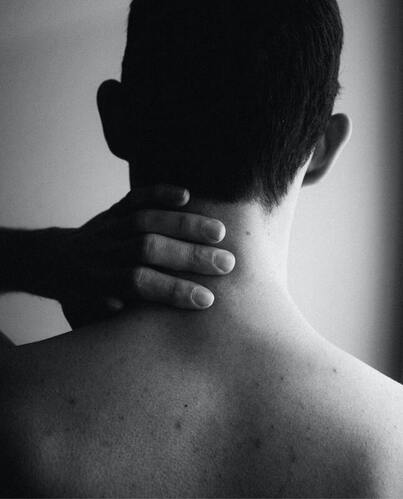 Photo by Deb Kennedy on Unsplash Photo by Deb Kennedy on Unsplash How is Acupuncture Done for Neck Pain? For neck pain, most acupuncturists will require you to either lie on your stomach or back. Some might also request you sit in a chair for treatment. An acupuncturist will examine a handful of pressure points around your neck. In acupuncture, the main pressure point near this area is known as Jian Jing. This point contains muscles situated near your shoulders. By focusing on this point, an acupuncturist will be able to release tense and stiff muscles and calm tingling nerves. If your neck pain is caused by swollen lymph nodes or congestion, they might instead look at the Heaven's Pillar point. This is situated on the base of your neck and close to where your head and spine connect. By pressing on it, an acupuncturist can relieve congestion and encourage drainage. After asking you a few questions about your neck pain (such as where it usually occurs or how long you’ve suffered from it) they will begin the treatment. The acupuncturist will press on the trigger points and gently insert the needles into them. Once they have used as many as they believe is necessary, you’ll need to relax with them in your body for about 15 minutes. After this time has passed, the acupuncturist will then quickly remove them. Does Acupuncture Only Use Needles for Neck Pain Relief? Acupuncture mainly uses needles to provide relief, but acupuncturists might also suggest some diet options. By fixing your diet to be high in anti-inflammatory food, it can help the acupuncture session work faster at relieving pain. Some of the most common food that will be suggested to consume include:
How Often Should These Sessions Be Held?The number of treatments you need to help alleviate neck pain will vary depending on the intensity of your pain. Most of the time, acupuncturists will recommend anywhere from one to two sessions per week over the course of six weeks. What Should I Do After Having Neck Acupuncture Done? After you have acupuncture done on your neck the best thing to do is rest. You don’t want to overexert it just because you feel a little better. This can ruin any positive changes the acupuncture treatment made and intensify the pain. You might also want to apply heat to your neck. This can help soothe any lingering soreness. It will also encourage the area to heal faster. Acupuncture is a helpful method to use if you want to holistically treat your neck pain. While it might take a few sessions before you start to see results, the wait is definitely worth it. References
Dr. Brent Wells founded Better Health Chiropractic & Physical Rehab in Alaska in 1998. He is currently leading 10,000 Alaskans to more active and pain-free lifestyles without drugs or invasive surgeries. He brings a progressive and highly innovative approach to chiropractic care. Dr. Wells continues to further his education with ongoing studies in spine conditions, neurology, physical rehabilitation, biomechanics, occupational ergonomics, whiplash, and brain injury traumatology. He is also a member of the American Chiropractic Association and the American Academy of Spine Physicians. 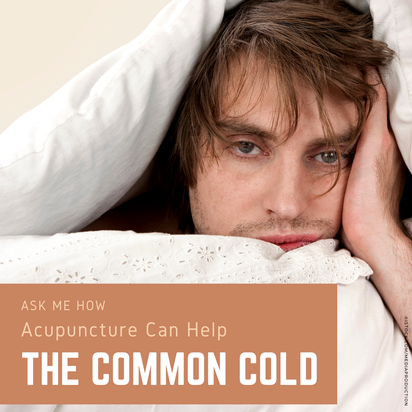 Background On The Common Cold Given the nature of the common cold and that it’s primarily caused by a viral infection, no antibiotic or western medicine has yet been able to cure it. Therefore, it’s a cold that we must suffer through until our bodies have healed itself and the symptoms have subsided and usually take 7-10 days to do so. Nearly 30-50% of all common colds are caused by the rhinovirus followed by a slough of other viruses that may also hinder our health. Taking special precautionary steps, such as washing your hands, taking vitamins and even receiving frequent exercise are all ways that you can prevent the onset of such an illness. The process of using Acupuncture treatment to fight the effects of, or even treat the common cold has been studied several times. Below, we will briefly look at one of those studies and their findings. The Purpose Of Research A team of Acupuncture students and staff members across five different Japanese Acupuncture schools chose 326 patients to be a part of the research group. A specific needling (the “Y Point”) was used bilaterally on the neck in order to determine the preventative and curative effects of manual acupuncture in relation to symptoms of the common cold. The Results Of the 326 students and staff to originally partake in the study, five had dropped out meaning that 321 total individuals finished the 2-week, 4 treatment studies. What they found was that statistically “significantly fewer [common cold] symptoms were reported in the questionnaire group than the control group.” Each person’s body is different and so are their symptoms. Those that were involved in this study made mentioned that additional research should be done before any claims are made under this topic. How does Acupuncture Affect the Body In This Study? The point of the study was to see if acupuncture could decrease the symptoms of the common cold that were seen and felt by those being studied. Certain acupuncture points can help boost the immune system which is what this study was trying to induce. If you find yourself unable to see an acupuncture specialist, you may be able to try acupressure at home! The following pressure points may aid if you are experiencing cold or flu symptoms: ● Lung 7 - Broken Sequence ○ Relieves Chills, Fever & Cough ○ Soothes Sore Throat ○ Releases exterior wind-heat and wind-cold ○ Relieves Headaches ● Large Intestine 4 - Union Valley ○ Relieves Headaches ○ Clears Congestions ○ Clears Lung Heat Other Ways To Stay Healthy Acupuncture can be a great way to get your immune system flowing as it should be. Other ways to stay healthy and keep your immune system in tip-top shape is to take Vitamin C, get plenty of sleep each night, avoid alcohol and other hindering depressants. https://www.ncbi.nlm.nih.gov/pubmed/15649831 http://www.petersenwellnessclinic.com/acupressure-points-boost-immune/ 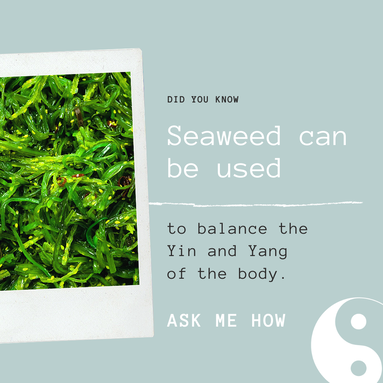 Seaweed has been consumed as a health aid and food enhancer for years in Asia, but recently there has been a growing interest in seaweed as a health superfood and for sustainable farming. Seaweed, otherwise known as Hai Zao in Chinese medicine, is known as a marine algae, or sea vegetable that grows primarily in salty waters. Three main classifications of seaweed are brown, red and green. Brown seaweed includes kombu, which is eaten widely in Japan, the red variety includes nori (which is seen in sushi wraps) and dulse. Green is the most common, and is known as wakame. In Chinese medicine, seaweed is used to balance the yin and yang of the body. Your yin encourages fluid, lubrication, moistening, cooling and stillness. Yang is associated with more heat, dryness, warming and movement. As one gets older, it is common to get yin deficiency. When you have yin deficiency, heat rises due to yin depletion not balancing the yang energy. Many menopausal women experience this yin deficiency in the form of hot flashes, low back pain, night sweats, poor memory, fatigue, ear ringing, dry skin and loss of vaginal lubrication. One food that has been shown to help is seaweed. Seaweed is in the category of “cold and salty” of food quality and temperature in Chinese medicine. It is said to nourish the yin and is eaten along with other foods like yams and black sesame seeds that help balance yin and yang. In addition to helping yin deficiency, seaweed “softens hardness” and loosens phlegm. What this means is seaweed helps dissipate nodules and soft swellings, as in lipomas, cysts, lumps and fat accumulation. Clinically, seaweed is used for swelling of the thyroid gland seen in goiter. See your acupuncture provider to get a diagnosis, formula and diet specific to your body’s needs. Seaweed has been shown to have loads of essential vitamins and minerals such as vitamin C, vitamin K, magnesium, calcium, iron, B vitamins, potassium and folic acid. Most importantly, seaweed has a lot of iodine. Iodine helps the thyroid for growth, metabolism and the immune function. When your thyroid is functioning at a low level, you may experience fatigue, muscle weakness, palpitations, sensitivity to sun, weight gain and goiter. Iodine used to be abundant in rich soil but has been depleted nowadays. Promising research indicates seaweed helping edema, fibroid tumors, limiting cancer growth due to phytochemicals called lignans and boosting immunity. In addition, it has been used as an anti-inflammatory aid for arthritis, to lower blood pressure and high cholesterol and to aid the respiratory system. Seaweed in Asia has been traditionally used for menopausal signs and symptoms, to reduce swollen lymph glands and to boost libido. But in general it is great for the skin, hair, teeth and bones. Seaweed is very alkaline and helps the pH balance of the body. Despite the benefits, there is a strong contraindication if you are hyperthyroid. In addition, moderation is key in all aspects. Too much iodine can raise the thyroid-stimulating hormones, and individuals who are sensitive can get heart palpitations, nervousness, irritability and sweating. Check with your doctor to be sure an increase in iodine is right for you. Eat small portions about once a week. You can buy seaweed dry, powdered or in supplements. Be mindful where it comes from and buy organic to reduce metals, arsenic and toxicity found in waters around the world. An added benefit for seaweed is sustainability. Kelp is considered the perfect crop, as it requires little care and feeding to grow abundantly. With all the health benefits and easy farming, it just might be the superfood of the future. 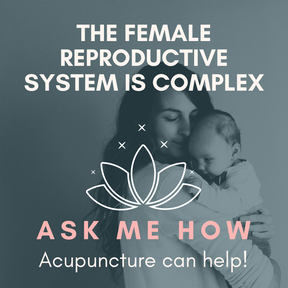 In Chinese medical theory, food is considered medicine. Food has qualities and functions biochemically and energetically that target specific organs. Not only that, but the action a particular food takes to benefit that organ in terms of taste, color and temperature is what is included in Five Element theory. Food has a relationship to both the natural elements as well as the organs in the body and balances the elements of fire, earth, metal, water and wood to healthy, generating cycles. In Traditional Chinese Medicine (TCM) everything is thought of in terms of yin and yang theory. Yin is often dark, cooling, moist, still, and internal where are Yang is bright, hot, moving, dry, and outward; Our bodies are constantly trying to achieve a balance between these two forces. There are even some foods that are considered a force of yin and some food is considered more yang. Depending on one’s constitution, some foods might exacerbate a hotter constitution while others would promote a cooling effect. Each person realistically needs a unique approach to food intake, as not all foods deemed “healthy” are good for everyone across the board. It is not recommended to self-diagnose, so see your Chinese medical provider to get a proper diagnosis of your particular constitution and advice on foods that may be right for you according to this theory. Color is one way to determine which organ a food will target. Ideally, one eats what is in season and includes a wide variety of flavors and colors. Colors in vegetables have beneficial antioxidants and anti-inflammatory agents as well as phytonutrients: Green: Green goes to the liver channel, a wood element. Foods that are green are spinach, lettuce, green beans, broccoli and avocado. Generally, these foods are more cooling and contain sulforaphane, an anti-cancer compound, as well as important vitamins like beta-carotene, iron, magnesium, potassium, vitamin B complex, vitamins C, A and K. Red: Red food tends to benefit the heart, a fire element. Red foods include tomatoes, carrots, strawberries, peppers and apples. Hawthorne berries and goji berries have been shown to benefit the heart and prevent heart disease, and vegetables with red color often have lycopene, a substance shown to help prevent cancer. Orange vegetables like carrots have carotenoids and lutein, powerful phytonutrients. Yellow: Yellow benefits the spleen/stomach, the earth element, involved with digestion. Yellow foods include soy, barley, egg yolks, yellow peppers, lemons, summer squash and cantaloupe. Yellow foods boost your mood and contain bioflavonoids, carotenoids and vitamin C. White: White benefits the lungs, a metal element. These foods moisten the lung and include white beans, radish, wild rice, garlic, cauliflower, potatoes, mushrooms and jicama. These are packed with potassium, magnesium, fiber, and antioxidants. Garlic contains allicin, which when crushed or chopped is anti-fungal and an antibiotic. Black: Black benefits the kidneys, the water element. Examples of these beneficial foods are seaweed, black beans, black sesame seeds, kelp and black rice. These foods are loaded with vitamins and minerals that strengthen bones, benefit the thyroid, and promote longevity. The next time you create your meal, include a combination of colors and flavors to not only delight your palate but also to keep your organs happy and balanced. Eat what’s in season, cook your vegetables, as cold, raw vegetables are harder to digest, eat slowly and include some kind of exercise during the day. We often say in Traditional Chinese Medicine that the liver is the system most easily susceptible to stress. Stress knots the Qi (energy) and makes its flow stagnate - this happens most quickly in the liver energy system. The liver, in TCM, is in charge of the smooth flow of Qi throughout the body. This means that if Qi flow is impaired (ie, by stress), the liver system will suffer. Likewise, if the liver energy system is weak or stagnant (from lifestyle choices, diet, trauma, emotional stress, illness or genetic factors), Qi flow throughout the body may be impaired.
Common symptoms of liver Qi stagnation include irritability, anger, tension headaches, migraines, trouble sleeping, PMS, irregular menstrual cycles and just a general stagnation of feeling stuck or blocked. Chinese herbs can be a very useful treatment for moving stuck liver Qi and helping it to flow smoothly, to reduce these sorts of symptoms. Chinese herbs are safe and effective when prescribed by a licensed practitioner. To effectively treat liver Qi stagnation, other supportive energy systems must also be moved or nourished, depending on the person. For this reason, these herbs are almost never taken alone, but rather as part of a formula targeting liver Qi stagnation as well as the backdrop on which is occurs. Chai Hu (Bupleurum): Chai Hu is one of the most commonly used herbs to regulate the liver Qi and treat Qi stagnation, so it can be used in formulas targeting depression, stress, tension headaches and menstrual pain. It also has a function of harmonizing the liver and the spleen energy systems, for treating indigestion, bloating and flank pain. It has a rising action, so needs to be used cautiously in patients with high blood pressure, but making it ideal for patients with sinking energy causing issues such as prolapse or hemorrhoids. Xiang Fu (Cyperus Rhizome): Xiang Fu directly spreads and regulates liver Qi, for treating symptoms such as hypochondriac pain, menstrual pain, irregular periods, epigastric pain and stress. Xiang Fu moves the Qi but is said to “move the blood within the Qi,” meaning it can move stuck blood by moving the Qi, and that it is a powerful Qi mover. It is an excellent herb for gynecological issues stemming from liver Qi stagnation. Bo He (Field Mint): Bo He is an herb for “releasing exterior heat,” which means fighting off acute infection with symptoms such as sore throat, fever, cough and headache. However, it has a secondary function of mildly soothing the liver Qi. As such, it can be a great supportive herb for liver Qi stagnation. It can therefore be used to treat menstrual issues, emotional issues, PMS, temporal headaches or pain along the sides of the body. Yu Jin (Turmeric Tuber): Yu Jin is an herb used to move stuck blood. It is therefore frequently used in formulas to treat pain following traumatic injury to an area. However, it also has the function of moving liver Qi, so it can be added to formulas for symptoms such as chest and flank pain, muscle pain or menstrual pain. Fo Shou (Finger Citron Fruit, “Buddha’s Hand”): Fo Shou is another herb that directly regulates the liver Qi, specifically for symptoms such as rib pain or belching. It also strengthens the digestive system through tonifying the spleen and stomach, as well as drying dampness and transforming phlegm to treat chronic wet coughs. For the most effective and safe treatment, consult a practitioner of Traditional Chinese Medicine. Safe home treatments for liver Qi stagnation include mint tea, turmeric tea and exercise. |
AuthorsRebecca M H Kitzerow is a Licensed Acupuncturist practicing in La Center, Washington. With over a decade of experience she has won 10 Nattie consumer choice awards from Natural Awakenings Magazine since 2014. Archives
July 2024
Categories
All
|
Photos from Hey Paul Studios, BeGreen_Studio, Pawel Pacholec, 1950sUnlimited, toulupaliaqaz, Joelk75, OnTask, Robert Gourley, cnu_sports, Mitya Ku, wuestenigel (CC BY 2.0), FootMassagez, 401(K) 2013, Mariana Heinz, @EdwardTerry, fishhawk, liverpoolhls, torbakhopper, Boemski, dolomitibl, Driscolltheque, Dave n Laura, Vaping360, MVWorks, Life Mental Health, MVWorks, mikefats, Scot Nelson, jfl1066, wZa HK, ruurmo, Guadalupe Cervilla, Army Medicine, GViciano, torbakhopper, adrigu, Saulo Cruz, Ben Cumming, marniejoyce, kcxd, JasonCorey, kanenas.net, Live to Create Photography, gm.esthermax, Unique Hotels Group, Zenspa1, mysiana, Tobias Lindman, Leader Nancy Pelosi, Kristoffer Trolle, swanksalot, Bill Selak, Parker Knight, stimpsonjake, Gedankensprudler, SuperFantastic, tonynetone, marniejoyce, JeepersMedia, Illusive Photography, 'Ajnagraphy', Iban Torras, scotted400, gtall1, dvanzuijlekom, BPPrice, Skley, torbakhopper, Renato Ganoza, anka.albrecht, QUOI Media, Public Domain Photos, Instant Vantage, Victor Tongdee, Free Grunge Textures - www.freestock.ca, sportEX journals, Nadja Tatar, angela n., marniejoyce, MVWorks, Karolina Kabat, Thomas Fisher Rare Book Library, UofT, ginnerobot, tracilawson, haven't the slightest, My Photo Journeys, Pierre Willemin, Florena_Presse, SuperFantastic, colindunn, zzkt, TraumaAndDissociation, ER24 EMS (Pty) Ltd., shixart1985 (CC BY 2.0), marniejoyce, Tomás Fano, freestock.ca ♡ dare to share beauty, Archives New Zealand, Jaykhuang, airdrie.m, Go-tea 郭天, OnTask, wuestenigel, focusonmore.com, Disney | ABC Television Group, Andrew Gustar, Didriks, ConstructionDealMkting, charlywkarl, barnimages.com, Lel4nd, runwaypilates, michaelstephanfotografie, McLevn, TraumaAndDissociation, eLife - the journal, Lars Plougmann, wuestenigel, shixart1985, boviate, davis.steve32, kevin dooley, @the.photoguy (insta), frederic.gombert, Feathering the Nest, Victor Tondee, shixart1985, wuestenigel, Joe K Gage, kennethkonica

 RSS Feed
RSS Feed
